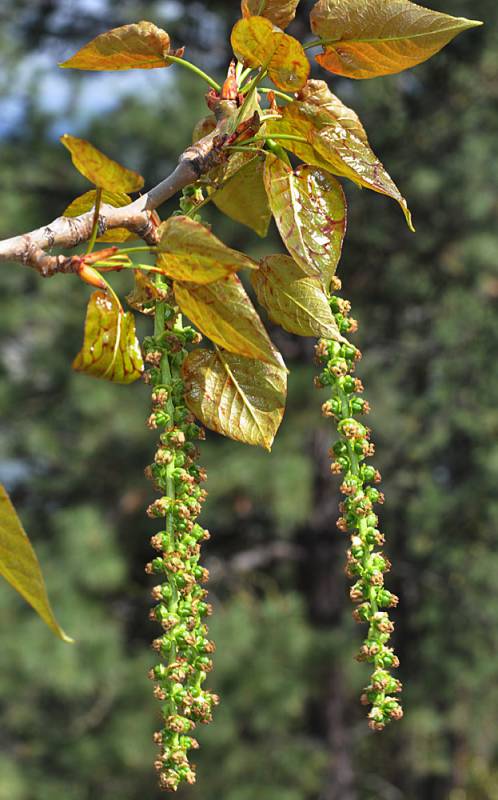Populus trichocarpa
Populus angustifolia
black cottonwood
narrow-leaved cottonwood
Leaves alternate, the blades fragrant, strongly resinous, the lower side distinctly paler than the upper, variable in shape, 5-15 cm. long and 3-9 cm. wide, broadest below the middle, pointed at the tip and usually rounded or truncate at the base, the surfaces usually glabrous;
petioles terete, about half as long as the blade.
Catkins drooping; the bracts subtending the flowers in the catkins lacerate-fringed; staminate catkins elongating to 2-3 cm, then deciduous; pistillate catkins at maturity 8-20 cm. long;
stigmas 2, broadly dilated.
Capsules rotund-ovate, 5-8 mm. long, sub-sessile.
Populus trichocarpa
Populus angustifolia
Widely distributed on both sides of the Cascades crest in Washington; Alaska to California, east to Alberta and Wyoming.
Occurring east of the Cascades crest in eastern Washington; Alberta to Nevada, east to the Great Plains.
- Local floras:
CA,
OR,
WA
- Local Web sites:
CalFlora,
CalPhotos,
Flora NW,
PNW Herbaria
WildflowerSearch
iNaturalist (observations)
USDA Plants Database
- LBJ Wildflower Center
- SEINet
- Plants of the World Online
- Encyclopedia of Life
- Wikipedia
- Google Image Search


